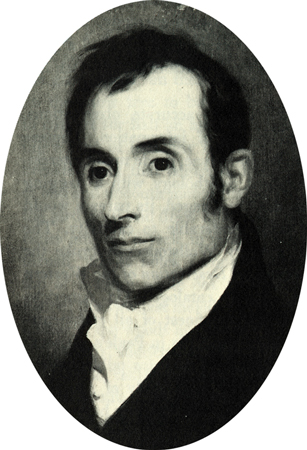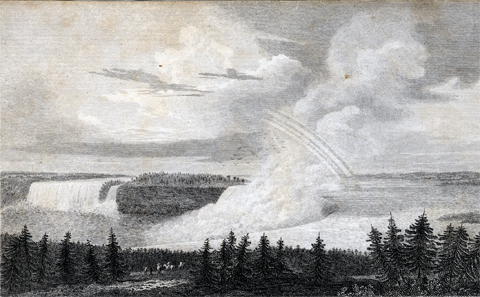Perhaps the naturalist most influenced by Lewis and Clark was Alexander Wilson, born 6 July 1766, the son of an illiterate whiskey distiller in the town of Paisley, Scotland. After spending time apprenticing in various capacities, Wilson departed for North America in 1794. Upon his arrival he found employment in Philadelphia, where he met William Bartram, who introduced him to the world of ornithology.[1]Alexander Wilson Website, University of Virginia, http://xroads.virginia.edu/~public/wilson/front.html (accessed May 4, 2007).
In 1803, Wilson wrote to a friend that “I have had many pursuits since I left Scotland . . . music, drawing, etc. etc. I am now about to make a collection of our finest birds.”[2]Clark Hunter, ed., Life and Letters of Alexander Wilson (Philadelphia: American Philosophical Society, 1983), Letter 35. However, it was not until two years later that he sent his first twenty-eight drawings to William Bartram for approval. In between these two events, Wilson made a momentous walking trip to Niagara Falls from Gray’s Ferry, Pennsylvania, watching for birds with the eye of an ornithologist. Wilson seldom traveled far from Philadelphia, and his walk to Niagara Falls left a vivid impression. The trip inspired him to write a lengthy poem, The Foresters, first published in a serialized format in The Port Folio in 1809-1810 and then posthumously in 1818. He also drew several views of the falls and illustrations of two particular episodes in the poem, and commissioned John James Barralet, an Irish artist, to paint the series. He later commissioned copperplate engravings of them to illustrate his epic poem.
Coincidentally, this was the very same artist Lewis had hired to paint an image of the Great Falls of the Missouri. The only known printing of the Lewis/Barralet rendition of the falls appeared in the Dublin 1817 edition of the Lewis and Clark narrative.[3]The author speculates that this was not the first printing of this image, though at the time of this publication no other editions of this print have been found.
Although there is no way to know for sure, the dates make it possible for Wilson to have recommended Barralet to Lewis. We do know that Wilson appeared to have a close connection to Lewis when he wrote personally and profoundly on his death in 1809.[4]Alexander Wilson, “Particulars of the Death of Capt. Lewis,” The Port Folio (Philadelphia), Vol. 7 (January 1812): 34-47. We also know that Wilson had a professional reason to make contact with Lewis, as he was attempting to compile information about North American birds for his text, which would be published over many years (1808-1814). Wilson would later use the birds collected by Lewis and Clark that were exhibited at Peale’s Museum to illustrate his work on North American ornithology.
While Lewis and Wilson’s relationship remains ambiguous, it is obvious that Wilson not only read available accounts of explorers, but that he actively used their specimens to complete his own works.
Up to the Ridge’s top, high winding led,
There on a flat, dry plain, we gaily tread;
And stop, and list, with throbbing hearts to hear
The long expected cataract meet the ear;
But list in vain. Though five short miles ahead.
All sound was hushed and every whisper dead.
“Tis strange,” said Duncan, “here the sound might reach.”
“Tis all an April errand,” answered Leech.
“Men to make books a thousand tales devise,
And nineteen-twentieths are a pack of lies.
Here, three long weeks by storms and famines beat,
With sore-bruised backs, and lame and blistered feet;
Here nameless hardships, griefs, and miseries past,
We find some mill-dam for our pains at last.[5]Alexander Wilson, The Foresters: A Poem, Descriptive of a Pedestrian Journey to the Falls of Niagara in the Autumn of 1804, (West Chester, Pennsylvania: printed by Joseph Painter, 1838), 73.
Related Pages
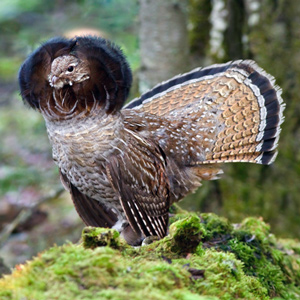

At Fort Clatsop on 5 February 1806, Reubin Field returned from a hunt with “a phesant which differed but little from those common to the Atlantic states.”
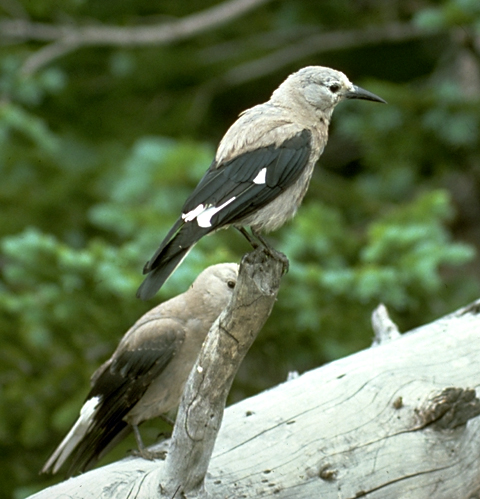

On the Salmon River, Clark “saw to day [a] Bird of the woodpecker kind which fed on Pine burs it’s Bill and tale white the wings black every other part.” Later, Meriwether Lewis had time to study and describe it with his usual thoroughness.
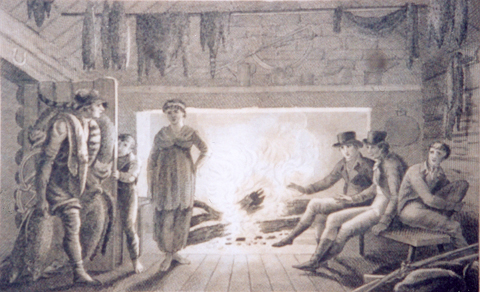

Alexander Wilson’s epic poem The Foresters, was a tediously versified 2,210-line diary of his twelve hundred mile round-trip hike from Philadelphia to Niagara Falls in the autumn of 1804.
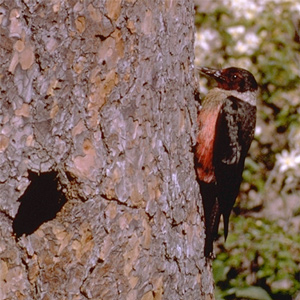

On 27 May 1806, while the expedition was camped in the vicinity of modern Kamiah, Idaho, on the Clearwater River, Lewis described a bird that was “new to science,” with his typical mixture of minute detail and genuine admiration.
Notes
| ↑1 | Alexander Wilson Website, University of Virginia, http://xroads.virginia.edu/~public/wilson/front.html (accessed May 4, 2007). |
|---|---|
| ↑2 | Clark Hunter, ed., Life and Letters of Alexander Wilson (Philadelphia: American Philosophical Society, 1983), Letter 35. |
| ↑3 | The author speculates that this was not the first printing of this image, though at the time of this publication no other editions of this print have been found. |
| ↑4 | Alexander Wilson, “Particulars of the Death of Capt. Lewis,” The Port Folio (Philadelphia), Vol. 7 (January 1812): 34-47. |
| ↑5 | Alexander Wilson, The Foresters: A Poem, Descriptive of a Pedestrian Journey to the Falls of Niagara in the Autumn of 1804, (West Chester, Pennsylvania: printed by Joseph Painter, 1838), 73. |
Experience the Lewis and Clark Trail
The Lewis and Clark Trail Experience—our sister site at lewisandclark.travel—connects the world to people and places on the Lewis and Clark Trail.
Discover More
- The Lewis and Clark Expedition: Day by Day by Gary E. Moulton (University of Nebraska Press, 2018). The story in prose, 14 May 1804–23 September 1806.
- The Lewis and Clark Journals: An American Epic of Discovery (abridged) by Gary E. Moulton (University of Nebraska Press, 2003). Selected journal excerpts, 14 May 1804–23 September 1806.
- The Lewis and Clark Journals. by Gary E. Moulton (University of Nebraska Press, 1983–2001). The complete story in 13 volumes.
